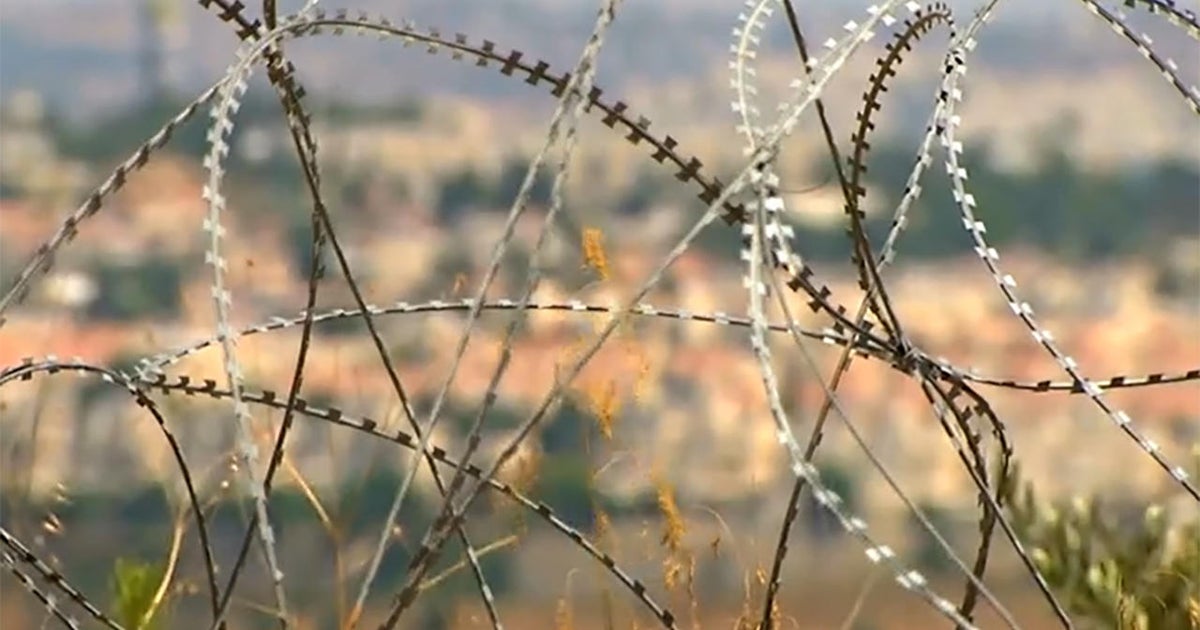"That is not my son!": Texas father discovers wrong body in coffin. His son was cremated by mistake.
In Jacksonville, Florida, Sandy Betts smiles looking at pictures sitting on the shelves above her desk.
"I created these memorabilia of Kyle," says Betts. The outgoing young man is hugging his mom in one photo. He's surrounded by family and friends in others.
"He was not shy." She says her son loved his family, baseball and dancing. "He was very happy."
More than 1,000 miles away, in Waco, Texas, Stephen Brady talks about his first-born son.
"He was my best friend,' says Brady.
Davis Brady was also very close to his family. He, too, loved baseball and music. "He was very smart."
But for all of their sons' similarities, they also had some obvious differences. "They didn't look anything alike and [there was] a huge age difference," says Betts.
Davis Brady was 22 years old and 6'1″. He had a light complexion with strawberry blonde hair.
Kyle Betts was 36 years old and 5′ 4″ tall. He had a dark complexion with dark hair.
That makes so much of what now haunts these two families even harder to understand, CBS Dallas reports.
Florida documents show what happened
According to a Jacksonville Sheriff's Office Incident Report, Brady and Betts were found together in a Jacksonville apartment. They were victims of fatal accidental overdoses. In the documents, the Jacksonville detectives describe each victim, but the Betts and Brady families say those entries are either incorrect or incomplete.
Detectives list their hair, complexion, and build as the same, stating both had strawberry-blonde hair, a fair complexion and medium build. The weight for one of the men is listed but the other's is missing.
"His complexion wasn't fair and white," says Betts. "They said they were both blondes."
The documents anger Betts. "How can they be so messed up on all of this?"
In documents labeled as Log-In Receipts, when the bodies are transported to the Medical Examiner's Office, Betts is listed as a case number ending in -65. Brady's case number ends in -66.
Both families say, on those documents, the clothing descriptions for their sons prove their identities are reversed. In one example, Kyle Betts -- an avid Jacksonville Jaguars football fan -- always wore a Jaguar hat. The report says Davis Brady had on the only hat. Betts says she knows her son had his hat on.
"They had them switched right away from the very beginning,' says Betts.
Autopsy exams, timestamped 24 hours after the Log-In Receipt, show the case numbers for each man are switched.
They should correctly match each man to his case number.
However, months later, toxicology reports reverse those original case numbers once again. The numbers appear incorrect in the original digital versions of the documents, but by hand, someone has marked on the reports. He/she crosses out the name on each man's documentation and writes the other man's name in the column near the case numbers. Once again, the men and their cases numbers should correctly match, but there was still confusion.
"I mean it's just JSO (sheriff's office) disrespect from the beginning and the inconsistency between a transition from JSO to the Medical Examiner's Officer," says Betts, frustrated at the trail of confusion in the documents.
Bodies switched
The Medical Examiner's office was supposed to send Davis Brady's body to his home in Waco.
But at the viewing, his father says the family made a shocking discovery.
"The body rolls in, and I said, 'That is not the hair color. …The beard color wasn't right. …The whole complexion wasn't correct.' "
Frustrated and angry, Brady says, "I looked, and I said, 'That is not my son!' "
Brady's mom immediately started making frantic calls to Florida, to Betts' mom.
"It was a very distraught message," says Betts. "'Your son is here.' And she's [Brady's mom] in Texas."
Another devastating discovery
The two families were about to realize, just days before that call, the Betts had requested that their son, Kyle, be cremated.
"In my mind, immediate panic because I thought to myself, 'I know where her son is. If my son is there, her son has already been cremated.'"
Betts got on the phone.
"I contacted our funeral home right away," Betts recalled, explaining what she said. "' So, please tell me Kyle has not been cremated yet.'" Pausing and heartbroken, Betts explains what she heard next. "'Cremated, today!'"
"Of all the timing," she said. "He had just been cremated when she [Brady's mom] had reached out to me."
To make matters even more painful for the Brady family, cremation is against their religious beliefs.
"In the Mormon Church … they prepare for burial by embalming," explained Brady. "We never got to see my son's body at all. We were returned ashes."
Today, Brady is almost in disbelief. "I'll never be able to bury my son's body. … We received the ashes and I'm still not sure that's Davis."
Brady says there have been too many mistakes to know what is accurate. "I have doubts."
Authorities confirm the switch
"At that point, I reached out to the medical examiner," says Betts, adding that the medical examiner's office confirmed the mix up.
Betts says the affirmation came with an upsetting offer.
"Their fix was the easy, least expensive fix possible. 'Would you like for us to get him cremated?'" said Betts.
An outraged Betts replied, "'Hell no! You're not cremating my son over there in Texas.' How do I absolutely know that's even my son in Texas? …This poor mom needs her son's body moved to Texas and I definitely want my son in Jacksonville.'"
How common is this?
Both families are exploring legal options. Digging through the documents, they both blame the Jacksonville Sheriff'sOffice and the Medical Examiner's Office District IV in Florida.
This all raises the question about how common this is.
"Rare," says Jim Bates who, for 30-years, has been the director of The Funeral Consumers Alliance of North Texas. This is a place consumers can turn to with questions about the way death care is handled for a loved one.
Bates says he hears hundreds of complaints a year — typically about the preparation or appearance of a body — but not about body switches.
Regarding body switches, Bates says, "I can't think of a single time."
CBS Dallas obtained state records showing that, since 2015, the Texas Department of Banking has received four similar complaints. Digging through pages of documents and complaints, the station discovered accusations and pictures of gravesites involving loved ones listed in reports:
"Not buried in the plot"
"Two bodies in one grave" and an "Empty grave"
"In this plot by mistake"
"Placed in the wrong plot"
Conflicting opinions
CBS Dallas also reached out to two Texas attorneys who specialize in funeral malpractice cases.
It asked them how common body switches are.
"There's actually no way to know," says Alex Katzman. "If there's a cremation, if it's closed caskets, it may happen more often, and I suspect it does, than people report."
Attorney Mark Greenwald says nationwide, the number of similar headlines and the number of law firms handling these cases prove that body switches are not uncommon.
"We've handled cases where they've misidentified the body at the mortuary … misplaced the body at the funeral home …made a mistake of being cremated," says Greenwald.
Describing how gut-wrenching it can be for families, he says, "We have literally had to dig people up from the ground who were not supposed to buried in that place."
Katz and Greenwald tell CBS Dallas that together, they have two pending cases right now hauntingly similar to the one involving the Betts and Brady families.
Carrying the heartbreak
"This is all I have of my son," Davis says, looking at a small chain he's holding in his hand. Davis Brady's mom gave him a cremation bracelet with Brady's remains.
Along with heartache, Brady's father now carries what he says he can only assume are, his son's ashes.
"Someone needs to be held accountable," he says. "Accountability of the Medical Examiner and the county detectives on the case…"
Brady says his family has never received a phone call or apology from anyone.
Both families say the trail of documents only raises more questions about what went wrong.
"I feel like they just totally forgot he was a human being, that he was somebody's son, somebody's brother, that he was loved," says Betts.
Jacksonville Sheriff's Office response
In a statement provided to CBS Dallas sister station WJAX-TV in Jacksonville, the Sheriff's Office there said, "As a result of Marsy's Law, we are not at liberty to respond to questions that may identify or confirm victims of a crime. However, the Medical Examiner's Office is responsible for the identification and release of bodies. In the scenario you described below, you would need to reach out to them for more information."
Duvall County Medical Examiner's response
This Medical Examiner's office told WJAX-TV it could not comment due to "pending litigation."
Ways to prevent this from happening to your loved one
Jim Bates, Mark Greenwald and Alex Katzman all provided tips for what you should do to identify the body of a loved one before he/she is laid to rest:
1. If you cannot personally identify the body yourself, you should send a friend or family member.
2. If no one is available to identify the body in person, ask to use Zoom or FaceTime so you can see it happen.
3. The body should have a tag, typically on the foot or toe. You should ask to see the tag and match the name and case number to the body and each document.
4. If a death care service does not allow this identification, or if it provides any red flags, remember you can move your loved one to another funeral home.
5. If you feel hurried through the burial or cremation process, this is a red flag. Any delay should only cost you about $50 a day for refrigeration of a body. Many places will try to charge you up to $800 a day. That is a not a fair practice, according to Bates.
6. Death care services often use interns who need hours to master their skills. Those interns should be supervised by funeral directors. They should not be working alone.
7. You should look closely at the fine print on your contract for references to interns and all other practices.



